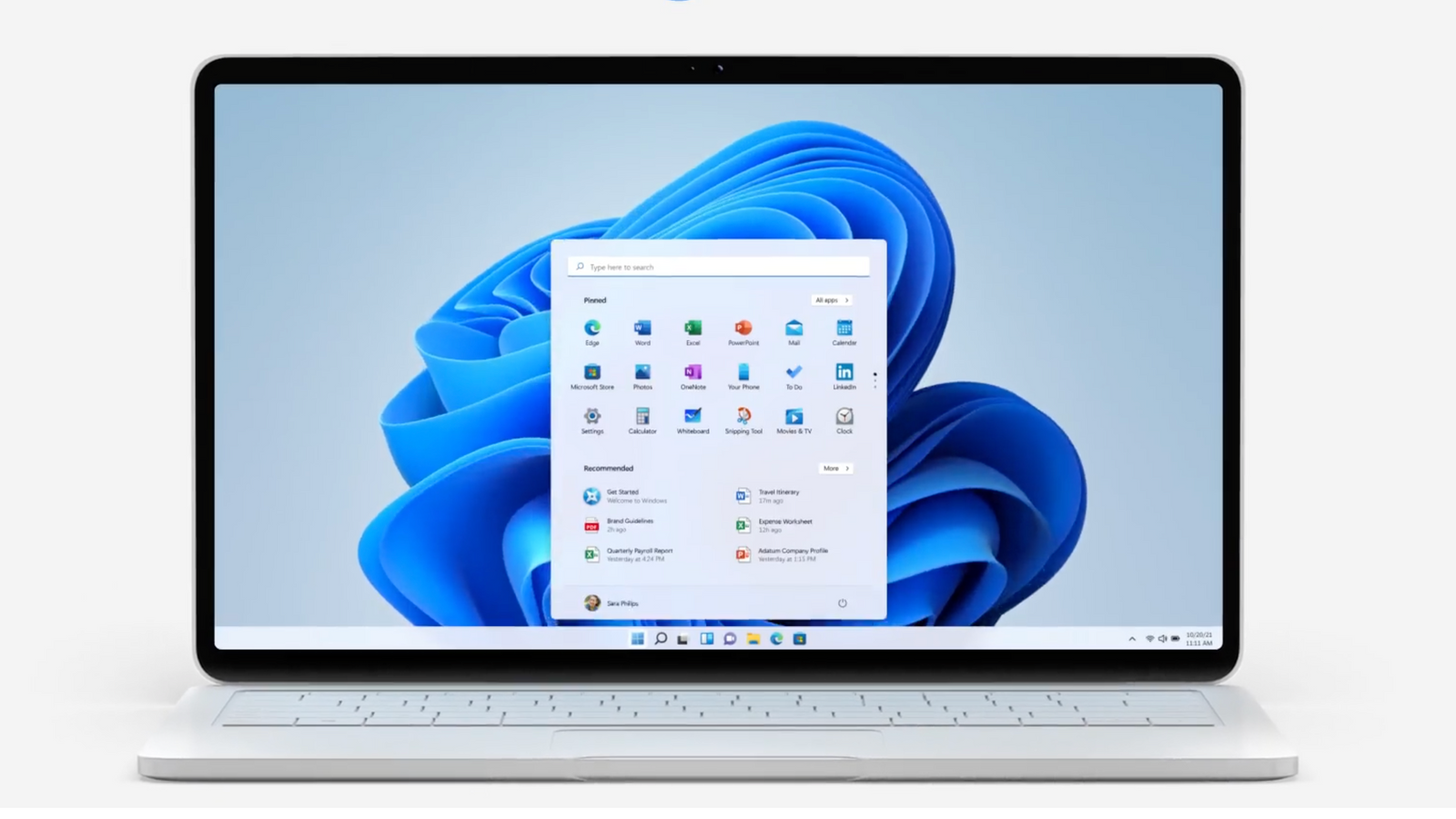Microsoft is launching Windows 11 on Tuesday as a free upgrade, introducing a new start screen and user interface designed to clean up users’ screen space.
There are no major changes to the way the operating system works beneath the user interface, although there are some, but the design is meant to be much more user-friendly.
In particular Microsoft is placing the Start menu in the middle of the screen – as it is the icons in the taskbar – making the desktop experience more similar to mobile, and is bringing in rounded corners in the style of MacOS.
For Microsoft, the update offers an opportunity to stress its own products and areas of expertise and dominance, especially in its productivity and office apps that have seen an increase in use due to remote working during the COVID-19 pandemic.
The influence of mobile operating systems can be seen in the new Microsoft Store, the app store for Windows applications where third parties can list their apps, but also eventually in its support for running Android apps through the Amazon app store.
On its website, Microsoft describes Windows 11 as having “easy-to-use tools that can help you optimise your screen space and maximise your productivity”.
It is the second free operating system upgrade issued by the company after Windows 10, which helped Microsoft return to the successes of XP after the struggles of Windows 8 – although it won’t be possible to upgrade all PCs.
The end of the password? Microsoft lets users log in with fingerprints and facial recognition instead
UK government and police servers vulnerable to new Microsoft email hack, security researchers say
E3 2021: From Halo’s return to a new Nintendo Switch – five things to watch out for world’s biggest gaming convention
Instead there are a range of minimum requirements, including supporting a Trusted Platform Module (TPM) – a processor that is designed to carry out cryptographic operations in a physically secure environment – and the expected requirements about modern processors and RAM.
Microsoft said the gradual rollout will see all eligible PCs offered the upgrade by mid-2022, although the number of eligible computers has been questioned as it likely won’t be available on machines more than four years old.
In its review, online technology magazine Ars Technica said the “attractive new design” was “overshadowed by regressions and high system requirements” and said a cynic could see the Windows 11 requirements as designed to drive new PC sales.
“Windows 11 is not a revolutionary step,” said Geoff Blaber, chief executive at analyst firm CCS Insight, describing it as “an iterative release that pinpoints where Windows needs greater ambition rather than introducing the sweeping changes even with [Windows 10]”.
The new user interface was described as “fresh” and “sleeker” by JP Gownder at Forrester, who added: “Ultimately, Windows 11 will need to spend some time in the wild with users before establishing its true purpose and identity.
“But a revamped user interface and many thoughtful features give it a chance to stand out, particularly since its release coincides with a new world of hybrid work.
“All those incremental changes, taken together, can sometimes add up to more than the sum of their parts. The proof will only be seen in the months after its release, as judged by users.”






















